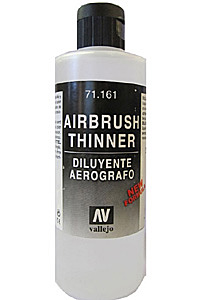First thing I want to say is Vallejo model color brushes better than any acrylic I have ever used and has a very wide range of colors to choose from so that's a plus for me. it will from now on be my go to for detail painting.
Airbrushing is another story...I have sacrificed tons of plastic and time trying to dial in the thinner to paint mix to get this stuff to spray I have been monkeying with thinners and air pressure for days. I thin it down 1:3 like everyone says and it clogs my brush time after time, I try thinning it more and its way too thin.
I thought it was because I was using a new airbrush...so I loaded up some Tamiya paint thinned 50/50 and it sprayed great zero clogs and left a nice smooth finish, unlike the Vallejo which was either grainy or too thin.
I haven't tried the model air line yet but am going to pick some up tomorrow to see how they treat me from what I gather they are for the most part idiotproof which is perfect for me
Airbrushing is another story...I have sacrificed tons of plastic and time trying to dial in the thinner to paint mix to get this stuff to spray I have been monkeying with thinners and air pressure for days. I thin it down 1:3 like everyone says and it clogs my brush time after time, I try thinning it more and its way too thin.
I thought it was because I was using a new airbrush...so I loaded up some Tamiya paint thinned 50/50 and it sprayed great zero clogs and left a nice smooth finish, unlike the Vallejo which was either grainy or too thin.
I haven't tried the model air line yet but am going to pick some up tomorrow to see how they treat me from what I gather they are for the most part idiotproof which is perfect for me


